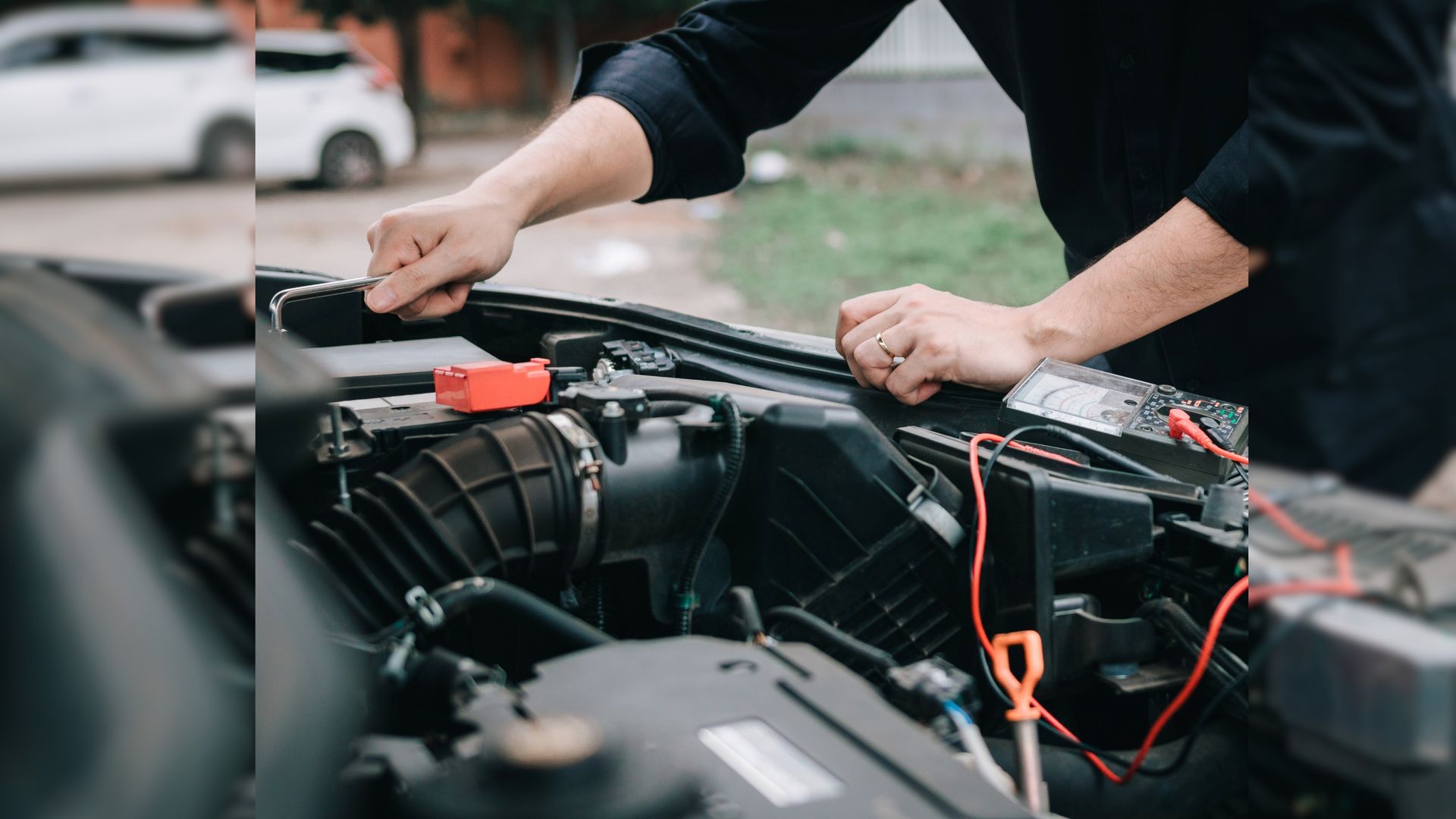By Julie Hardegree
•
August 15, 2024
Recognizing when your car battery needs replacement is crucial for every vehicle owner. A failing battery can lead to frustrating breakdowns, leaving you stranded at the most inconvenient times. In this comprehensive guide, you will learn the telltale signs that indicate it's time to replace your car battery. From slow engine cranking and dashboard warning lights to electrical issues and age-related factors, this guide covers all the essential indicators of a dying battery. You will discover proactive maintenance tips to prolong your battery's lifespan and avoid unexpected failures on the road. Recognizing Signs of a Failing Car Battery Dim Headlights and Interior Lights Dim headlights or interior lights can signal a failing battery. If your car's lights appear noticeably dimmer, especially when starting the engine or driving at night, it may indicate that the battery is struggling to provide sufficient power. This issue can worsen when you use other electrical components, like the radio or air conditioning, which draw additional power from the already strained battery. Clicking Sound When Turning the Key Hearing a clicking sound when you try to start your vehicle is another clear indication of a weakening battery. This noise occurs when the battery fails to supply enough power to engage the starter motor effectively. Ignoring this issue can worsen battery damage and potentially leave you stranded. Slow Engine Crank If your engine cranks slowly or takes longer than usual to start, it’s a strong sign that your car battery may be nearing the end of its life. A sluggish start indicates that the battery is losing its ability to deliver the necessary power to initiate the engine. Factors Influencing Car Battery Lifespan Quality of the Battery The quality of your car battery significantly impacts its lifespan. High-quality batteries are designed to last longer and can withstand various conditions, often coming with extended warranties. Conversely, lower-quality batteries may deteriorate more quickly, leading to a shorter lifespan. Vehicle's Usage Patterns How you use your vehicle also affects the battery's lifespan. Frequent short trips can prevent the alternator from fully recharging the battery, while longer highway drives provide better recharging opportunities. Additionally, extreme temperatures can significantly impact the battery's performance; colder climates may reduce capacity, while hotter climates can accelerate internal corrosion. Impact of Climate on Car Battery Performance Extreme Temperatures Extreme weather conditions can weaken your car battery. Cold temperatures slow down chemical reactions within the battery, making it harder for the engine to start. Conversely, excessive heat can lead to evaporation of the battery's electrolyte, causing internal damage and shortening its lifespan. How Driving Habits Affect Battery Longevity Frequent Short Trips Drain the Battery Frequent short trips can significantly reduce your car battery's lifespan. Each time you start the engine, the battery draws power without sufficient time to recharge, leading to a gradual drain. This cycle can accelerate wear and tear, necessitating earlier replacement. Overusing Electronic Accessories Drains the Battery Leaving electronic accessories on while the engine is off can quickly drain the battery. Devices like headlights and entertainment systems consume power directly from the battery, reducing its charge and lifespan over time. Testing Your Car Battery's Health Checking Voltage with a Multimeter To assess your car battery's health, use a multimeter to measure its voltage. Ensure the vehicle is off and all electrical systems are deactivated. A healthy battery should read around 12.6 volts. Lower readings may indicate a loss of charge capacity and the need for replacement. Conducting a Load Test at an Auto Shop A load test performed at an auto shop can reveal hidden issues. Professionals simulate real-world conditions by applying an electrical load to gauge how well the battery performs under stress. If the battery struggles during this test, it may be time for a replacement. Checking for Corrosion on Battery Terminals Regularly inspect your battery terminals for corrosion. Clean any buildup to ensure a solid electrical connection, which is vital for optimal battery performance. Choosing the Right Replacement Battery Consider the Vehicle's Specifications When selecting a replacement battery, check your vehicle's manual for specific requirements, including group size, cold cranking amps (CCA), and reserve capacity (RC). Choosing a battery that meets or exceeds these specifications ensures optimal performance. Select a Reliable Brand with Good Reviews Opt for well-reviewed brands known for reliability, such as Optima, DieHard, ACDelco, and Interstate Batteries. Consumer reviews can provide valuable insights into battery performance and longevity. Step-by-Step Guide to Replacing Your Car Battery Safety Precautions Before starting the replacement process, park your car in a safe, well-lit area. Wear protective gloves and eyewear to prevent accidents while handling the battery. Disconnecting the Cables Begin by disconnecting the negative terminal first, followed by the positive terminal. This order minimizes electrical hazards during removal. Tips for Extending Your Car Battery's Life Keep it Clean Regularly clean the battery terminals to prevent corrosion, which can lead to poor connectivity. A mixture of baking soda and water works well for cleaning. Limit Short Trips Try to minimize short trips to allow the alternator sufficient time to recharge the battery. Consider using a trickle charger for vehicles that sit idle for extended periods. Turn Off Electronics Ensure all electronics are turned off when the engine is off. Leaving devices running can drain the battery's charge. Importance of Regular Car Battery Maintenance Prevents Unexpected Breakdowns Regular maintenance helps ensure your car battery remains in optimal condition, reducing the risk of unexpected breakdowns. Extends Overall Vehicle Lifespan A well-maintained battery supports various electrical components, contributing to the overall health and longevity of your vehicle. Final Remarks Understanding the signs of a failing car battery and the factors influencing its lifespan is crucial for every vehicle owner. By recognizing these signs and taking proactive measures, you can ensure the longevity of your car's battery. This comprehensive guide equips car owners with the knowledge needed to make informed decisions about their batteries, ultimately saving time, money, and inconvenience. Frequently Asked Questions How can I recognize signs of a failing car battery? Look for slow engine cranking, dashboard warning lights, and dim headlights. If you notice electrical issues or unusual odors, it may indicate a failing battery. What factors influence car battery lifespan? Driving habits, weather conditions, and vehicle type affect battery lifespan. Short trips, extreme temperatures, and frequent use of electronic accessories can all impact longevity. How do driving habits affect battery longevity? Frequent short trips prevent the alternator from fully recharging the battery, leading to premature wear. Excessive use of electronic devices while the engine is off can drain the battery. What are some common causes of dead car batteries? Common causes include leaving headlights or interior lights on, old age, extreme temperatures, and parasitic drains from malfunctioning components. Why is regular maintenance important for my car's battery? Regular maintenance helps detect issues early on and ensures proper functioning, reducing the risk of sudden power loss while driving.





























